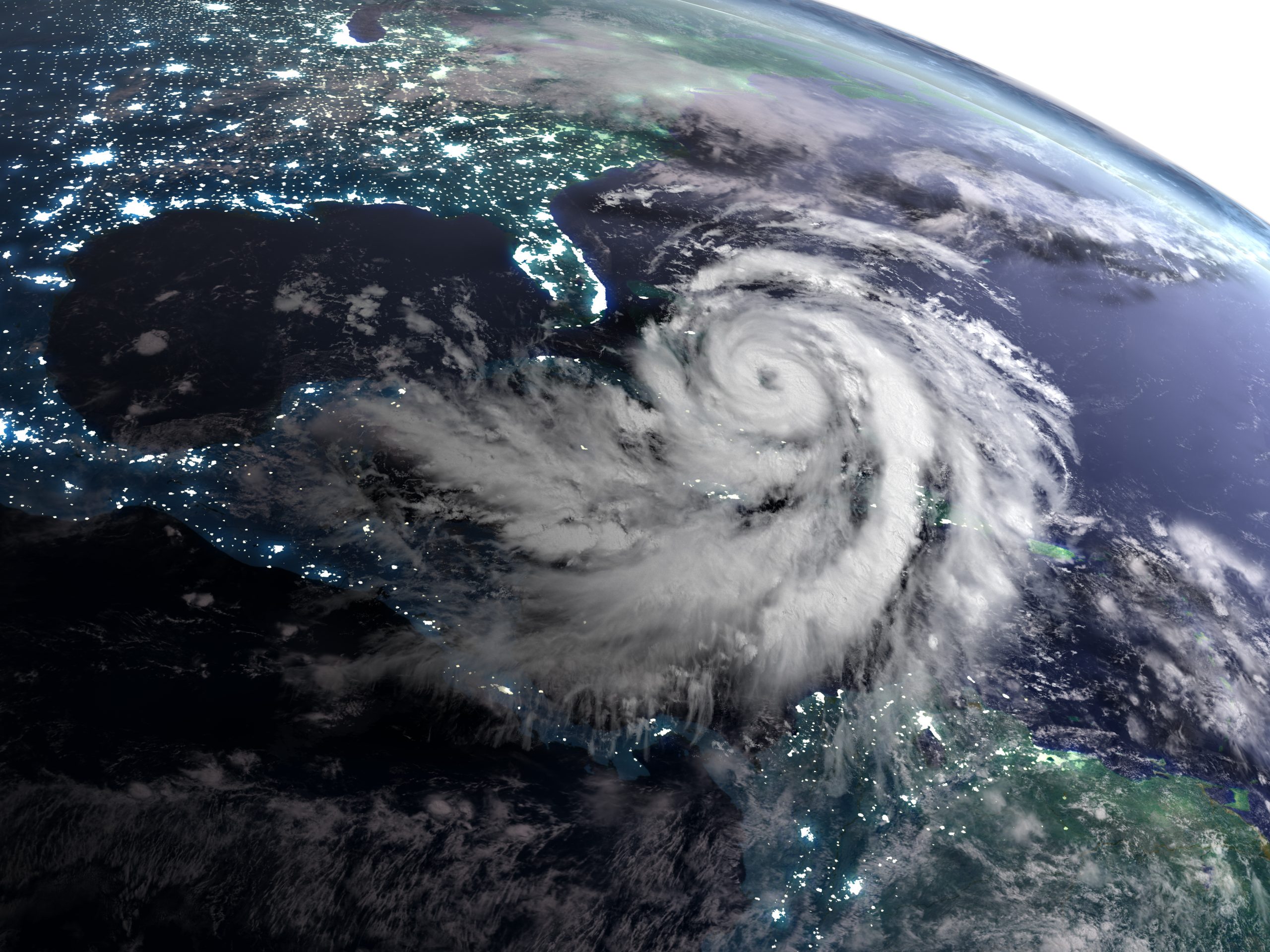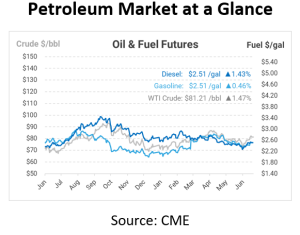
Preparing for Hurricanes – Part 1: Before the Storm
You are likely aware that the hurricanes season started on June 1, marking a six-month period of potential storms and threats along the eastern half of the United States (and occasionally Canada). If you live or operate a business in a hurricane-prone area, you understand the challenges that can arise. In addition to power outages and flooding issues, refueling vehicles and equipment before or after a hurricane can be a major obstacle due to possible fuel shortages and long lines at retail stations.
To help you stay prepared, we’ve created a two-part article series. They will provide you with step-by-step advice on what to do before and after a storm to keep your employees, property, and business safe. You’ll find tips on how to secure your building and set up emergency communication plans. This series will help you understand what you need to do to prepare for a hurricane and recover afterward.
Before the Storm
Storms can be unpredictable, and we often don’t know how much damage they will cause until they hit land. That’s why it’s important to be ready ahead of time. Keeping a close eye on the weather forecast and implementing safety strategies are key to getting through these tough times.
1 – Communicate with Your Fuel Supplier
Before a storm hits, maintaining open lines of communication with your fuel supplier is crucial. Ensure you are updated on planned site closures and any changes in demand, whether it’s an increase due to heightened activity or a decrease. Having this information allows you to plan effectively and avoid surprises. Proactively discussing your fuel needs and any potential supply disruptions with your supplier can help mitigate risks and ensure you have a reliable fuel supply when you need it most.
It’s important to note that carriers typically shut down when wind speeds top 40mph and that most suppliers will not make deliveries during high-wind situations.
2 – Save Backyard Fuel
If you have a fuel tank in your backyard, consider it your best source of reliable fuel during a disaster. To conserve this vital supply, consider fueling your vehicles at retail stations, such as gas stations and truck stops, before the storm hits. This strategy helps preserve your private fuel reserve for post-storm use when fuel supplies may be compromised. If tracking retail transactions is challenging, consider implementing a fleet card system or mobile fueling. It will help ensure your fleet remains operational without reducing your emergency fuel reserves.
3 – Don’t Over-Order Fuel
It’s natural to feel the urge to stock up on fuel as a storm approaches, but panic-buying can create more problems than it solves. Excessive purchasing can strain local supply chains, leading to long lines and delays at fuel terminals the next time you order. This affects not only you but also your neighbors who are trying to prepare. Order only what you need to maintain operations to ensure that everyone has access to the fuel they need. You also don’t want to order more than you can hold, leading to a retain and potential fees. You can learn more about the impacts of panic-buying here.
4 – Closely Monitor Fuel Usage
Monitoring your fuel usage closely before and after a storm is essential to avoid shortages. Some businesses, like power and waste management companies, may experience spikes in fuel demand, while others may see a decrease. By closely tracking fuel consumption, you can anticipate your needs and place orders with sufficient lead time. This careful monitoring helps prevent running out of fuel or facing penalties for excess fuel retention. Accurate data on fuel usage allows you to make informed decisions and maintain operational continuity during and after the storm.
5 – Purchase Watertight Seal Caps for Tanks and Fuel Hoses
Protecting your fuel supply from contamination is vital, especially if your site is prone to flooding or heavy rain. Invest in watertight seal caps for your tanks and fuel hoses to prevent water from entering and contaminating your fuel. This small investment can save you thousands of dollars in fuel remediation costs and prevent the wastage of valuable resources. You can also apply plastic wrap to seal tanks and hoses at fuel islands, in case the watertight caps can’t be used.
Ensuring your tanks and hoses are properly sealed is a simple yet effective step in safeguarding your fuel supply and maintaining its usability during emergencies.
6 – Keep Sandbags
Sandbags are a practical and essential tool for preventing water from entering your fuel tanks during floods. Place sandbags on the fill ports of your gas tanks to block water access. It’s wise to keep sandbags on-site at all times, ready for immediate use in case of flooding or other emergencies.
By having sandbags readily available, you can quickly protect your fuel supply from water, reducing the risk of contamination and ensuring that your operations can continue smoothly even in adverse conditions.
7 – Secure Loose Items
Securing all loose items around your facility is crucial to prevent damage and hazards during a storm. Use zip ties to lock hoses to gas pumps and move all loose trash cans, bins, and objects inside for storage.
Ensure that all items at the pumps, such as squeegees, are stored safely. This precaution helps prevent these items from becoming projectiles in high winds, reducing the risk of damage to your property and equipment. Properly securing loose items is a simple but effective way to minimize potential hazards and ensure safety during a hurricane.
8 – Check Electrical and Data Systems
Ensure that all electrical breakers are in working condition and that no outlets are exposed to water to prevent electrical hazards during a storm. Additionally, you should ensure that any transaction data or point-of-sale (POS) system data is properly backed up to prevent data loss.
Make sure your inventory levels can meet post-storm needs, ensuring that you can serve your customers effectively once the storm has passed. By taking proactive steps, you can minimize the impact of the storms on your business operations.
9 – Have an Emergency Response Plan
It’s important to rely on a fuel supplier you can trust. Businesses need to know if their supplier has the ability to deliver the fuel they need when they need it, no matter what. This is where a dependable fuel supplier, like Mansfield Energy, steps in. Just like you protect your business assets with insurance, you’d want to protect your company’s ability to keep going, serve your customers, and make money by ensuring you won’t run out of fuel.
If a major hurricane hits, many companies must keep their backup generators running to power their buildings and equipment. If there are no local fuel or delivery services around, an Emergency Response program from a supplier could be a lifesaver. They will provide the necessary fuel to keep generators and other equipment working until the power’s back on.
In our next article, “Preparing for Hurricanes – Part 2: After the Storm,” we will explore post-storm guidelines, focusing on recovery and reassessment of your fuel needs. Stay tuned!
Mansfield Emergency Response Program
When you’re dealing with the risk of hurricanes disrupting your operations, and if your business relies on non-stop fuel to keep going, you need to be prepared. With adequate support and strategic planning, you can successfully mitigate and overcome the challenges posed by these powerful storms. Don’t wait for the next hurricane season to secure a plan. Planning ahead is the key to keeping your business up and running in those situations.
Mansfield Emergency Response Fuel Program is designed for organizations with little margin for downtime. Whether you need backyard, mobile, or generator fueling for your facilities or vehicles, Mansfield’s extensive delivery network and fuel supply points ensure your business will be operational.

This article is part of Daily Market News & Insights
MARKET CONDITION REPORT - DISCLAIMER
The information contained herein is derived from sources believed to be reliable; however, this information is not guaranteed as to its accuracy or completeness. Furthermore, no responsibility is assumed for use of this material and no express or implied warranties or guarantees are made. This material and any view or comment expressed herein are provided for informational purposes only and should not be construed in any way as an inducement or recommendation to buy or sell products, commodity futures or options contracts.





